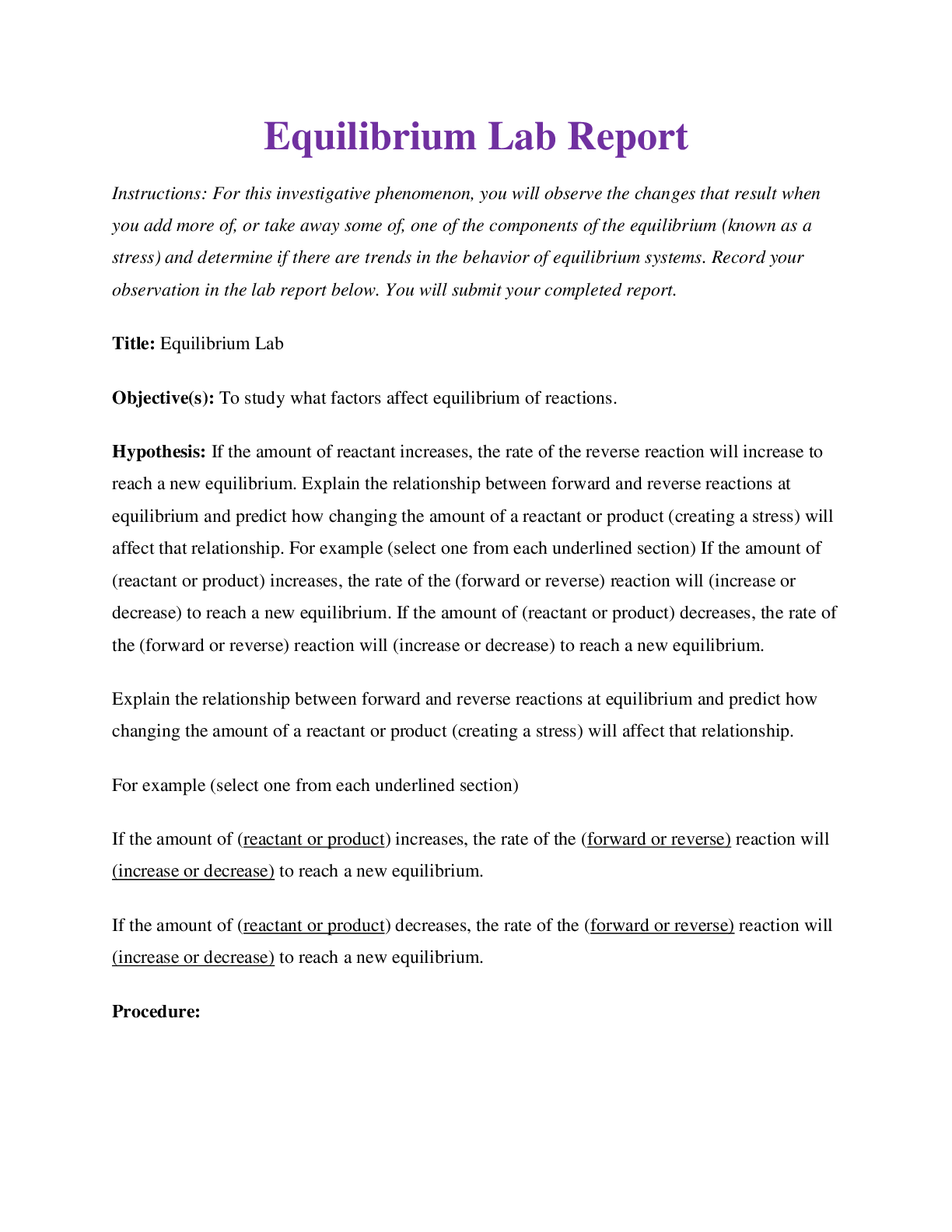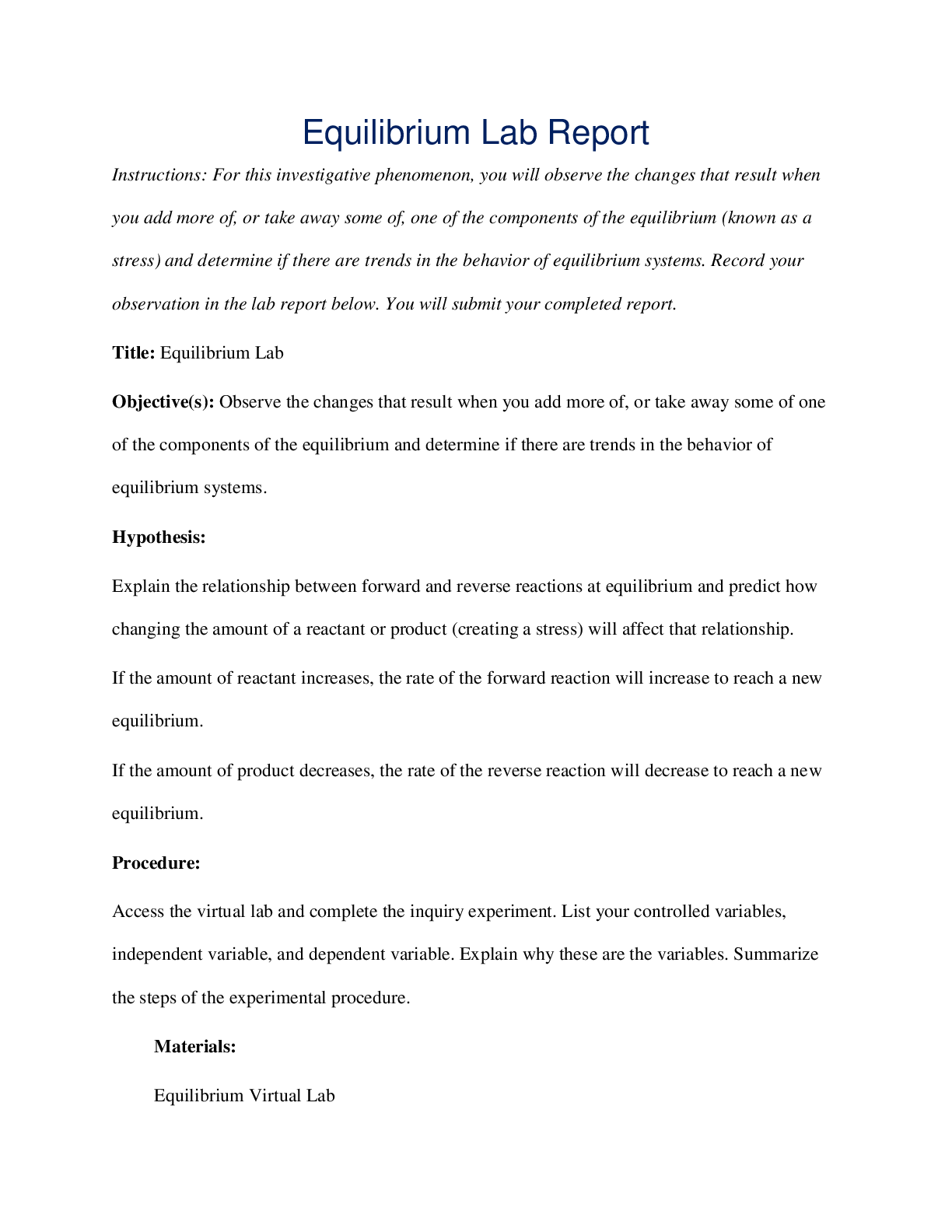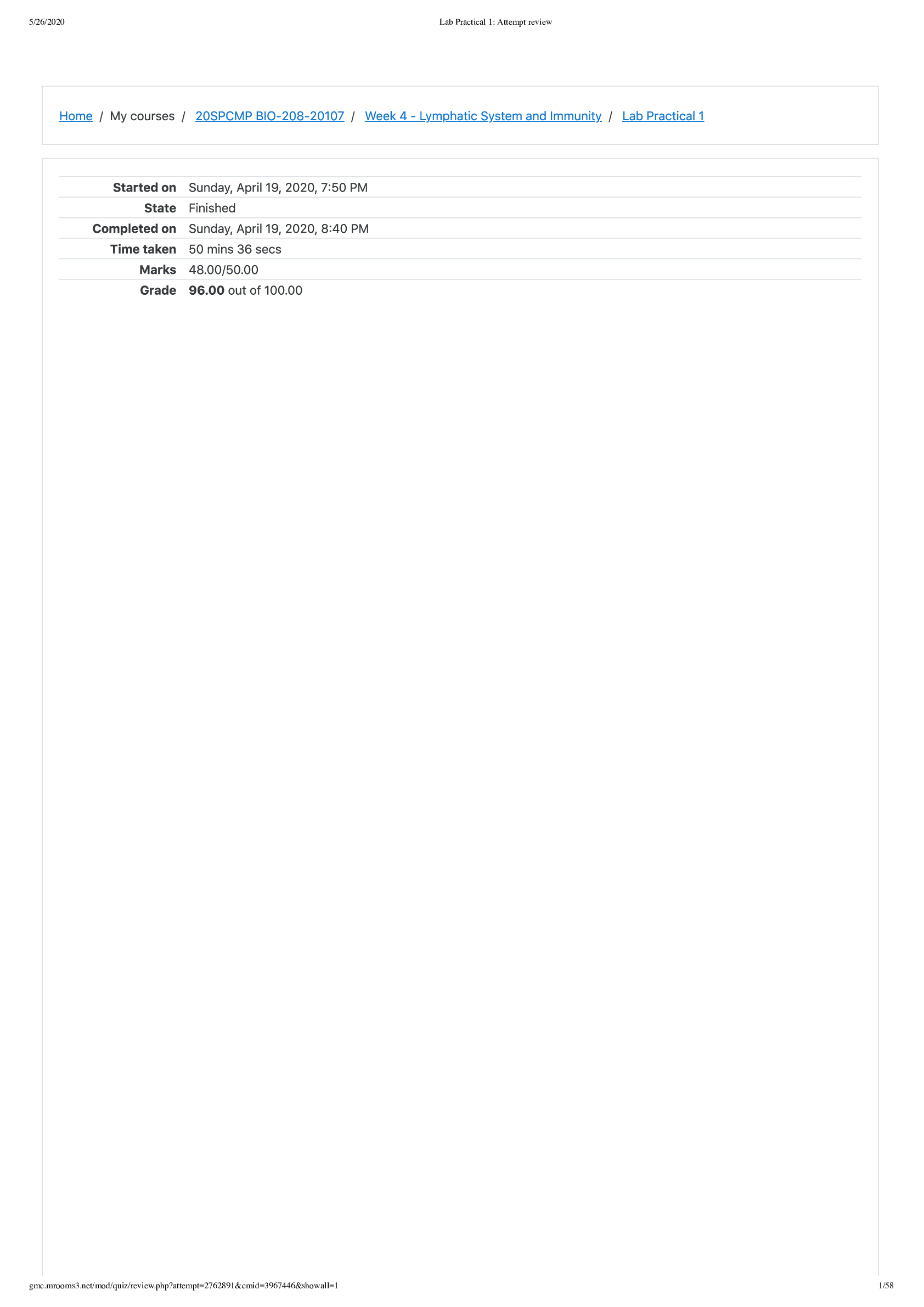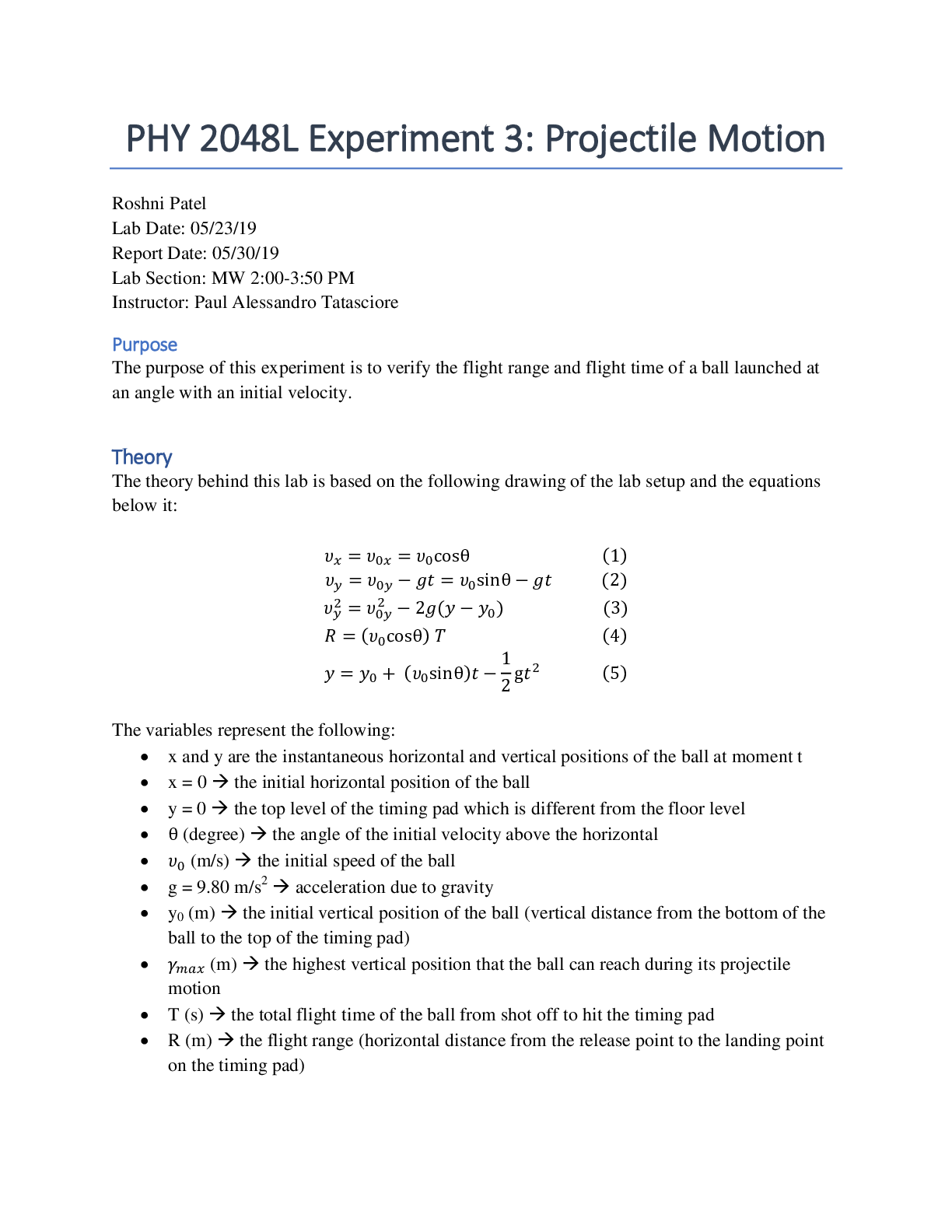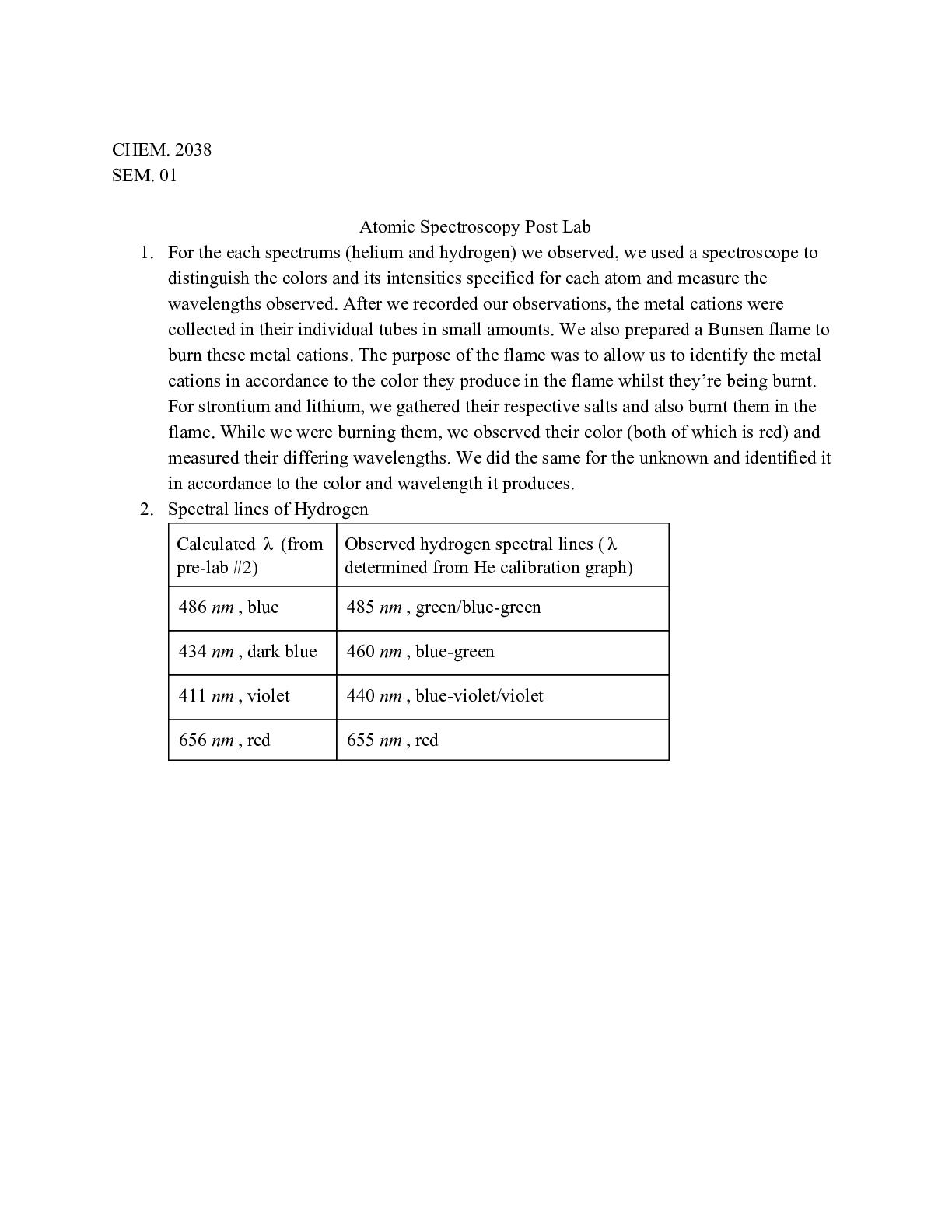Physics > Lab Report > University of Colorado, Denver - PHYS 2030Lab6: Experiment 6: Wave Interference (All)
University of Colorado, Denver - PHYS 2030Lab6: Experiment 6: Wave Interference
Document Content and Description Below
Experiment 6: Wave Interference Student- Salh Alkhaldi Submitted to: Kristin Miller Due Date: 03 AUG 2017, Thursday Objective: In this lab we will play with the wave interfe... rence simulation in order to understand the phenomenon of wave interference. What are it effects under different situations. We will observe the function of slits in interference and the patterns of corresponding interference. We will also look towards maxima and minima. Methods and Procedures: For this lab first of all, I opened a website link to perform the simulations related to wave interference. I opened it in JAVA and set the conditions as per requirements. Part 1 Water Wave Analogy First, I ran the simulation. And the dark part of the wave observed in the wave interference had high amplitude. • Comment on waves as amplitude is changed. By changing amplitude, it results in the increase of darker part in wave. And it does not become dull too early as compared to the wave having less amplitude. • Comment on waves as frequency is changed. As the frequency is changed we see the ripples in the water waves. As the darker part of the waves follow the other part with the less distance. Distance decrease between the two dark parts of the waves. We observed the interference after adding second source in simulation. • Comment on the interference of two waves. Interference always occur whenever we use two drop sources and it is a quite interesting phenomenon to watch. Due to the constructive interference, the darker part of the waves is increased. Part 2 Light Wave Interference By following the instructions given in the manual, I changed the simulation to light. After this I observed the wavelength ranging from red to blue. • Comment on the actual wavelength of blue light versus red light. Moving from blue to red light, the wavelength is increased. Adding screen and second source in simulation as per requirements. Question # 1: What effect does amplitude have on the maxima separation in the interference pattern? Question # 2: What effect does source spacing have on the maxima separation in the interference pattern? Question # 3: What effect does wavelength have on the maxima separation in the interference pattern? Part 3 Light Wave Diffraction To perform this section, we have to make some changes as per manual. Reset the light wave simulation and show the screen and graph. Add a 2-slit barrier to the simulation and allow the graphs to be formed. By this we have to observe the interference pattern of the simulation. We have to observe the graph of the simulations. Question # 1: What effect does a larger amplitude have on the maxima separation in the interference pattern? Question # 2: What effect does a shorter wavelength have on the maxima separation in the interference pattern? Question # 3: What effect does a larger barrier-to-screen distance have on the maxima separation in the interference pattern? Question # 4: What effect does a smaller slit width have on the maxima separation in the interference pattern? Question # 5: What effect does a smaller slit separation have on the maxima separation in the interference pattern? Conclusion Questions and Calculations Question # 1: Why would a helicopter passing over or near a TV antenna cause a garbled or unusable TV signal? Question # 2: The simulation uses monochromatic light. If white light was used instead, what would be seen on the screen? Question # 3: As wavelength of the incident light increases (blueàred) the maxima separation increases/ decrease? Question # 4: Two thin slits with separation of .0250mm are placed over monochromatic orange laser light at 610.nm. What is the small angle measurement from the central maximum (zero degrees, in line with the source) to the first maximum? Question # 5: A beam of green light is split by thin double slit with separation of 0.0500mm and incident upon a screen some distance away. The angles of the first and second maximums are .5840 and 1.170 respectively. What is the wavelength of the green light? Question # 6: A single, monochromatic indigo light source is shined through an etched, flat prism with a slit separation of .0250mm. The resulting interference pattern is viewed on a screen 1.25m away. The third maximum is found to be 6.6cm from the central maximum. What is the wavelength of the indigo light? Question # 7: Where are the first and second maxima? Question # 8: When the two additive colors blue (475 nm) and green (510 nm) are incident in equal magnitudes upon a white screen, the subtractive color cyan results. Consider two beams, one blue and one green. The blue beam is shined through a double slit diffraction grating with slit distance of 0.0400 mm and then displays an interference pattern on a screen 1.00m away. If the green beam is then shine d from the same position as the blue beam, what size diffraction grating would be required for the green beam so only a cyan interference pattern would be seen on the screen? Conclusion: [Show More]
Last updated: 1 year ago
Preview 1 out of 6 pages
Instant download
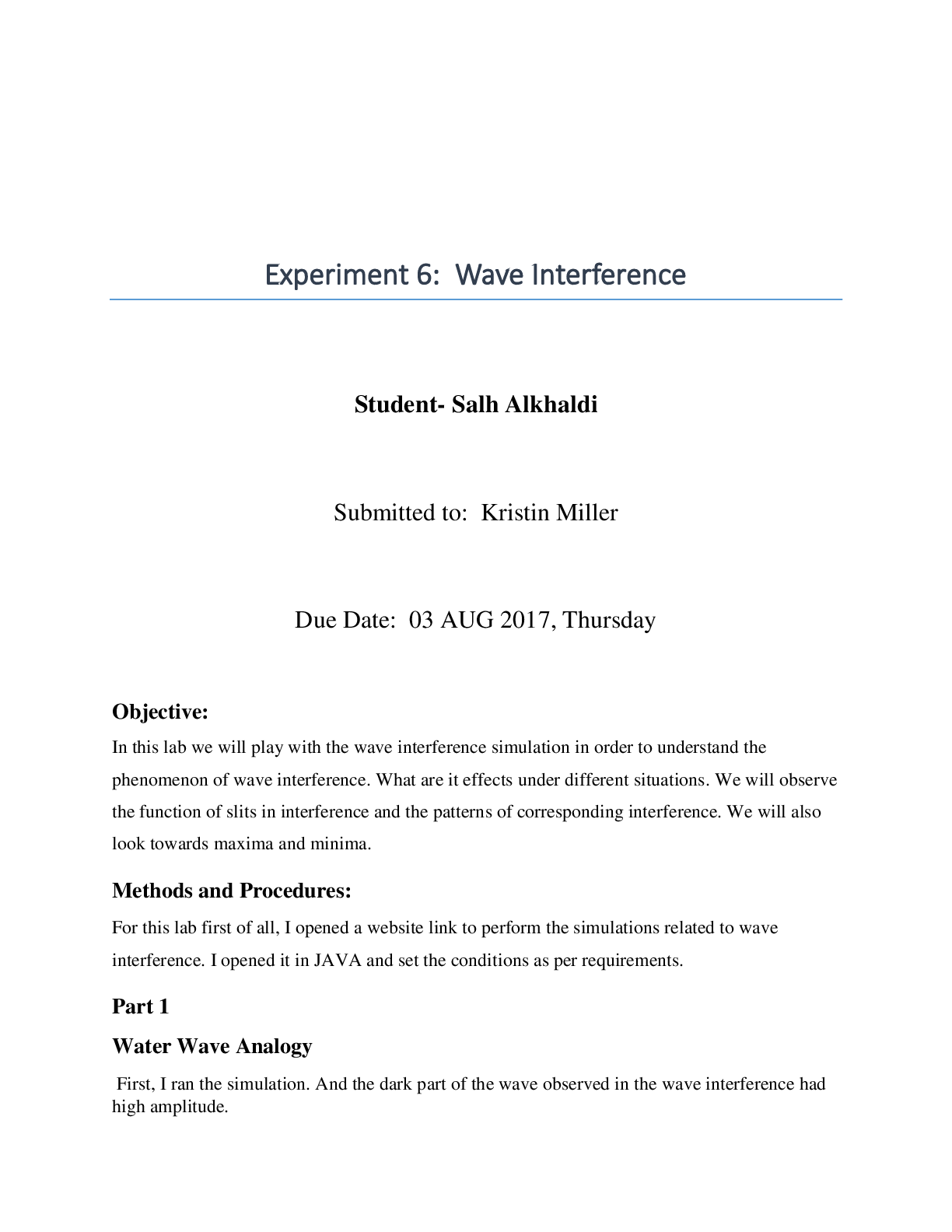
Buy this document to get the full access instantly
Instant Download Access after purchase
Add to cartInstant download
Reviews( 0 )
Document information
Connected school, study & course
About the document
Uploaded On
Jan 21, 2021
Number of pages
6
Written in
Additional information
This document has been written for:
Uploaded
Jan 21, 2021
Downloads
0
Views
83


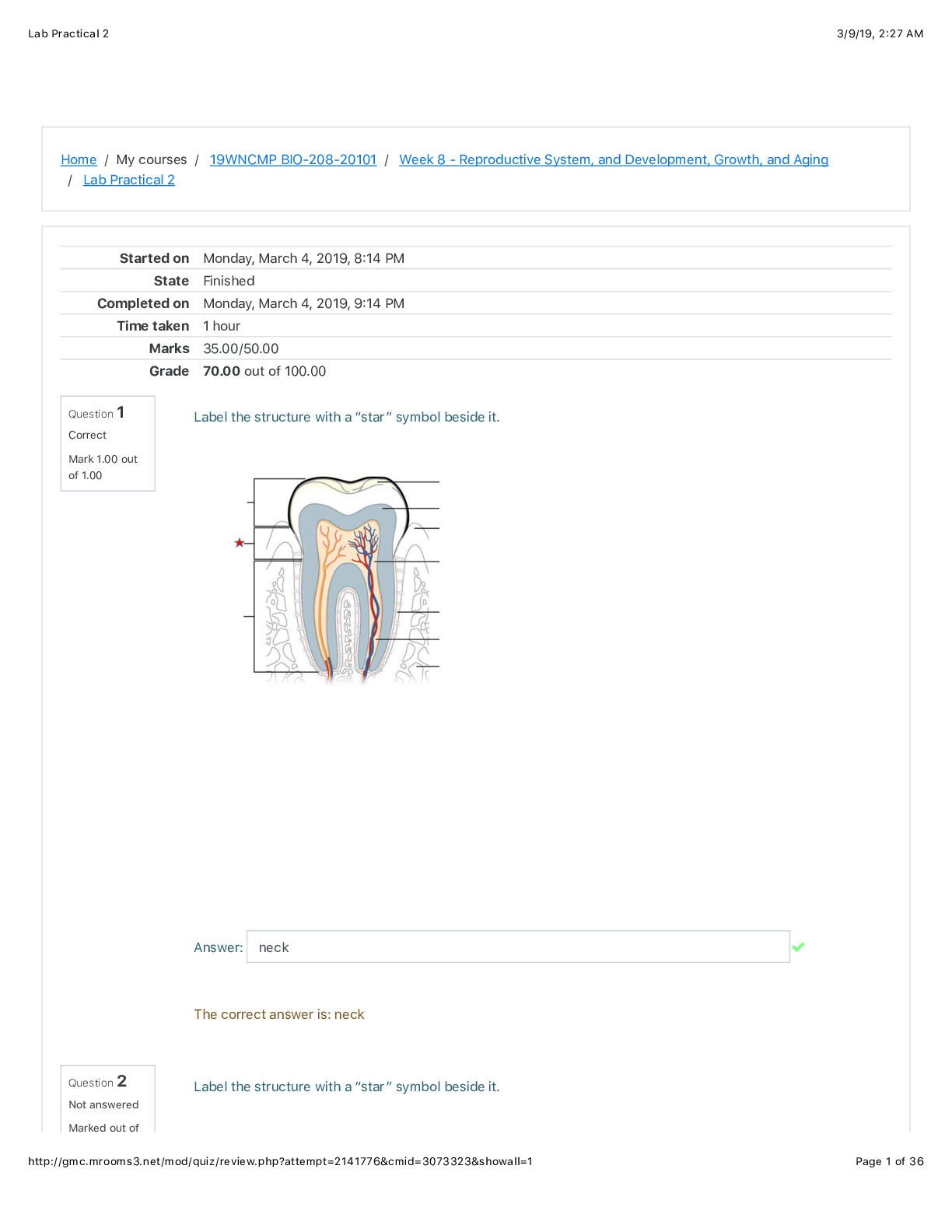
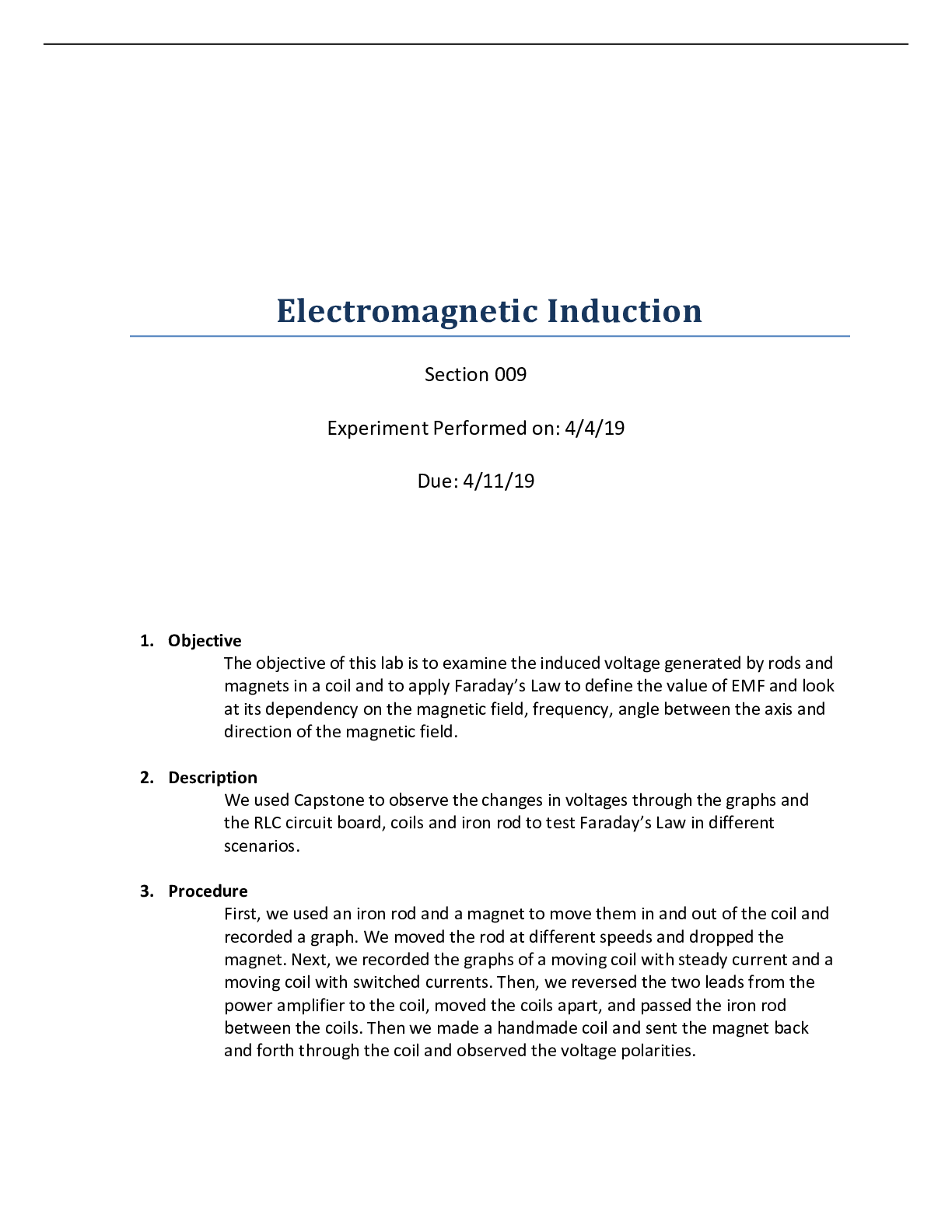
 (1).png)



